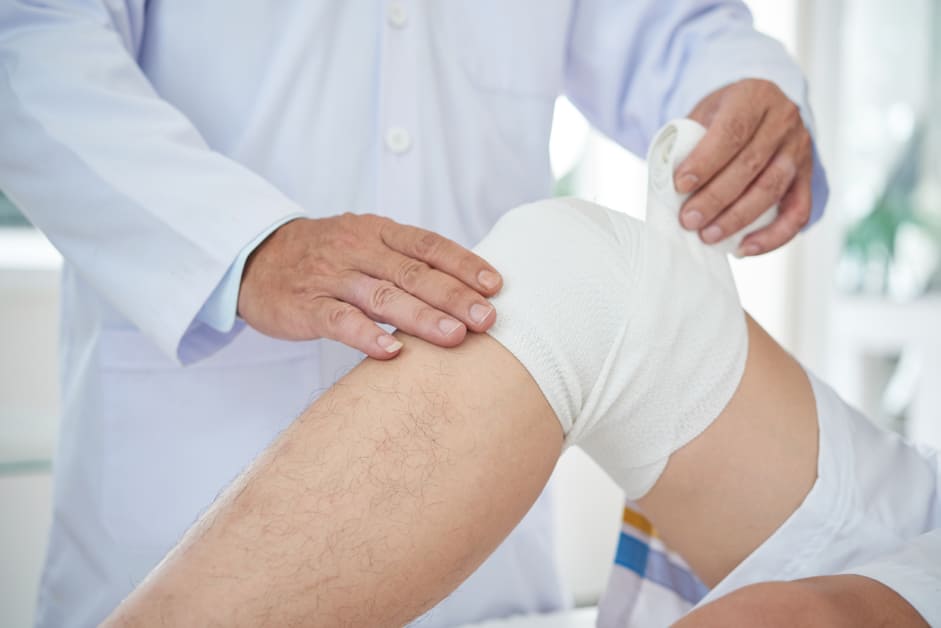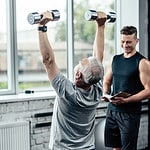Introduction
Knee pain can have various causes, from daily activities to medical issues. In many cases, rest and recovery can help. By learning the source of your discomfort and trying out different recovery techniques, you can get the best treatment.
This guide shows how to rest and recover from knee pain successfully so that you can stay active without hurting. It talks about exercises for rehab and stretches to improve flexibility and mobility in the affected joint. Plus, it looks at braces which may be useful in handling your knee-related symptoms. With the right mindset and understanding, you can handle your knee pain while protecting your overall health.
Causes of Knee Pain
Millions of people suffer from knee pain worldwide. It can be due to many reasons – such as misuse, wrong form or technique, or injury. It is vital to identify the cause of the knee pain. Then, you can plan a rest and recovery plan.
In this guide, we will explain the usual sources of knee pain and how to tackle them:
Overuse
Knee pain can have various causes, such as injury, wear and tear, or overuse. Overuse is a common source of pain and discomfort. It is caused by activities like running or jumping on hard surfaces. It can also be due to improper posture or technique, heavy loads over a long time, squatting too quickly, or excessive use of stairs.
It is important to take breaks between strenuous tasks. Anything done repetitively can damage your joints, if done improperly or with too much intensity. To avoid overuse injuries, warm-up and cool down exercises should be done prior to any physical activity. Strengthening the muscles around the knee joint and stretching are important. Having sufficient rest periods between strenuous activities keeps muscles from straining. Proper form reduces overload stress towards your knees. If you don’t see progress after multiple attempts, a specialist may be able to help.
Injury
Knee pain can be caused by injury or trauma. This type of knee injury may come on suddenly due to a fracture, dislocation or strain. It often causes swelling, stiffness, and difficulty in bearing weight. Overuse or repetitive motion can also cause injury.
Activities like running, jumping, and climbing can lead to wear and tear on the cartilage lining the knee joint. This can cause long-term knee pain. It’s important to wear the proper supportive equipment when doing these activities to reduce the risk of injury.
If you experience any kind of knee pain, always consult with a doctor to determine if an injury is present.
Arthritis
Arthritis is a common cause of knee pain, particularly in older individuals. There are three types of arthritis that cause knee joint pain: rheumatoid arthritis, osteoarthritis, and gout.
- Rheumatoid arthritis is a chronic autoimmune disorder. It causes inflammation in the body’s joints. It usually affects both sides of the body. Swelling, stiffness, and soreness can occur around the joint.
- Osteoarthritis is caused by wear and tear or overuse of joints. It develops as one gets older. It can also be caused by an injury to the knee joint.
- Gout is when too much uric acid builds up in the blood. This can lead to a painful attack in one or more joints. Knees, which take on lower weight-bearing capacity, are particularly affected.
Treating these conditions often involves a combination of treatments. Medications such as anti-inflammatory drugs may be prescribed. Rest, physical therapy exercises, and lifestyle changes (e.g., weight loss and avoiding activities that worsen symptoms) are often recommended.
Rest and Recovery Techniques
Rest and recovery are musts when it comes to knee pain. To assist with them, there are various approaches such as stretching, applying ice/heat, and taking over-the-counter drugs. In this article, we’ll look at the different rest/recovery options for knee pain and how to get the most out of them:
- Stretching
- Applying ice/heat
- Taking over-the-counter drugs
Ice Therapy
Cryotherapy, otherwise known as ice therapy, is popular among athletes for rest and recovery. It involves applying ice or an ice pack for 10-15 minutes at a time. Cold on aching muscles reduces inflammation, relieves soreness and increases movement in the affected area, by easing muscle spasms.
Ice therapy is great for short-term injury recovery and can also be helpful for long-term chronic pain conditions such as arthritis. Be careful not to apply it directly to sensitive areas like your hands, feet and face, as this can cause damage. Use a cloth or towel instead.
Remember to be cautious during treatment, and stop if you feel any discomfort or extra pain.
Compression
Compression is a great rest and recovery technique for knee pain. It reduces swelling, improves circulation, and supports.
Bandages, braces, or sleeves are the ways to apply compression. Before using them, consult a physiotherapist to ensure proper fit and application. The bandage should fit snugly, but not too tight so you can still move. Low-level electrical stimulation is also an option, but only with a therapist’s supervision.
Foam rolling is an inexpensive way to get deep tissue massage and better blood flow. Plus, it helps reduce acute and chronic pain.
Eating nutritious food also supports joint health.
Elevation
Elevation is a great way to rest and recover from knee-related issues. It helps reduce swelling and discomfort.
- Find a comfy chair or couch with enough space for your legs.
- Place pillows behind the knee for extra support.
- Make sure your legs are higher than your heart to be most effective.
Depending on the pain, you should elevate your legs for 15 minutes to several hours. Move around occasionally to avoid numbness from being still. Aim for an hour of elevation a day, with regular breaks.
Stretching
Stretching is an essential part of any recovery plan, especially for knee pain. It helps to reduce tightness, increase range of motion, and prevent further injury. With regular stretching, the muscles and tendons become more flexible and less likely to strain. Plus, it’s a great way to reduce stress in the area that can cause knee pain.
When stretching your knees, do it slowly and gently. Sit on a chair or flat surface with good posture and feet hip-width apart. Your legs should be flat on the floor with the knees above your toes. Reach your hands toward your shins or thighs. Don’t stretch too far because it can cause pain or tears in the muscles or tendons at the back of your thigh. Hold each stretch for 20 seconds before releasing and repeat two to three times per side.
You can find more specific stretches that focus on certain muscle groups. It depends on if you have specific needs like cartilage damage or other issues with chronic knee pain like arthritis or ITBS. Working with a physical therapist may also provide personalized exercise plans for easing knee pain at home or supervised gym setting.
Strengthening Exercises
Strengthening exercises are essential for knee pain management and recovery. They help build strength in the muscles around the knee joint. This improves joint stability and reduces pain or injury in the future. Circulation around the knee increases too, helping promote healing and tissue repair.
Start slowly with low-intensity movements and gradually increase difficulty. It’s important to not push beyond comfort levels. Focus on form too; improper technique can be damaging.
Common lower body strengthening exercises for knee pain include:
- Walking lunges
- Step ups
- Squats
- Glute bridges
- Calf raises
Using an elastic band adds resistance and difficulty that gradually strengthens lower body muscles. Stretching before and after activities helps reduce stiffness and discomfort in the knees. Restorative yoga helps build flexibility and encourages proper alignment and form during activities like running or weight lifting. Swimming is a low impact aerobic exercise that strengthens the entire lower body without putting pressure on vulnerable joints.
Conclusion
Practice these rest and recovery techniques for your knee pain. You will be healthier and feel better. Stay consistent with your routine and prioritize rest. Remember: your recovery journey is like a marathon, not a sprint. Talk to your doctor or physical therapist to go at your own pace.
Acupuncture, yoga and massage can also bring relief to knee pain:
- Acupuncture
- Yoga
- Massage
Frequently Asked Questions
Q1: What exercises should I do to help with knee pain?
A1: You can try exercises like stretching, flexibility, and strengthening exercises such as squats, lunges, and step-ups. Additionally, low-impact aerobic activities, such as brisk walking, swimming, or cycling, can help to strengthen your knee and reduce pain.
Q2: How can I reduce swelling in my knee?
A2: You can reduce swelling in your knee by applying ice to the area for 15-20 minutes at a time. Additionally, using an elastic knee support or a neoprene sleeve can help to reduce inflammation.
Q3: What foods should I eat to help with knee pain?
A3: Eating anti-inflammatory foods and avoiding inflammatory foods can help to reduce knee pain. Anti-inflammatory foods include fatty fish, fruits and vegetables, nuts, olive oil, and turmeric. Avoiding processed foods, caffeine, and alcohol can also help to reduce inflammation.





